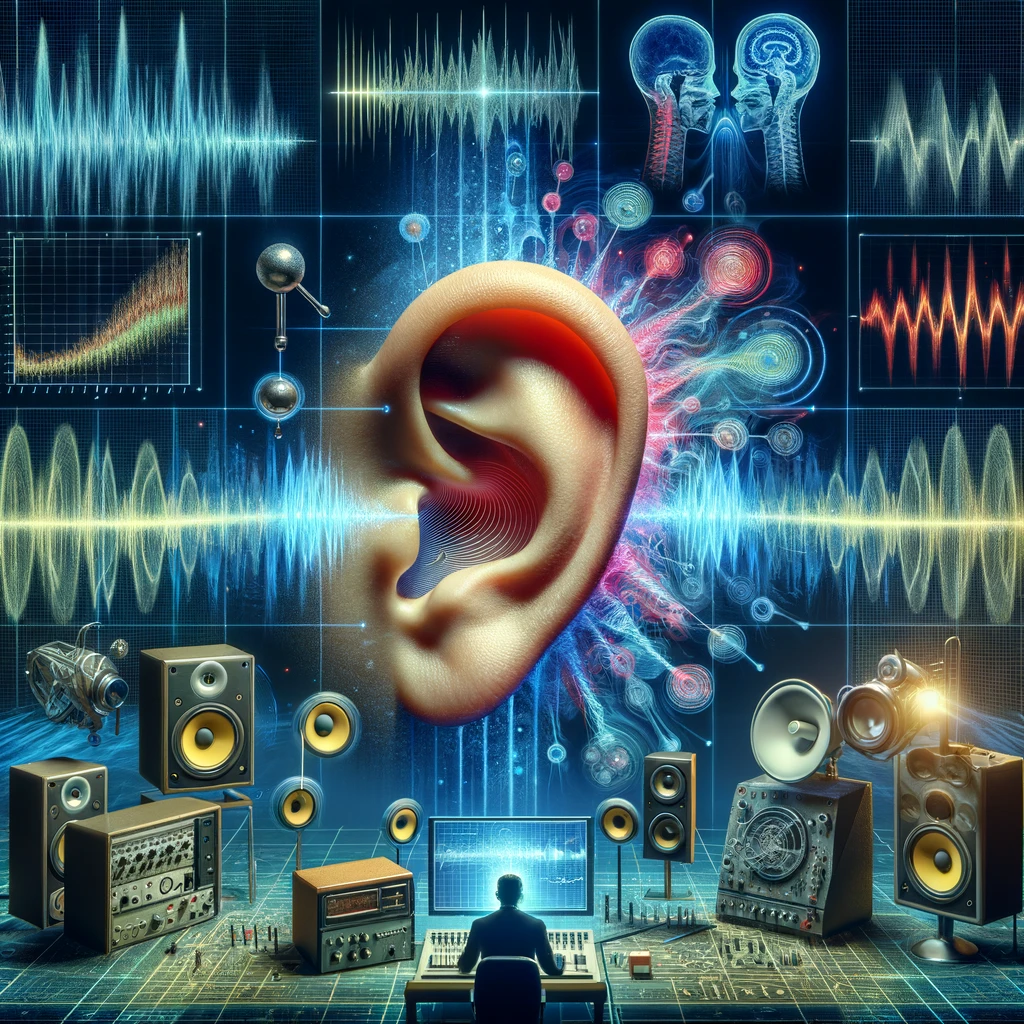Auditory Perception of Nonlinear Distortion
Auditory perception of nonlinear distortion is a fascinating area within psychoacoustics, the branch of psychology concerned with the scientific study of hearing. Nonlinear distortion occurs when an audio system (such as speakers, amplifiers, or headphones) introduces harmonics that were not present in the original signal, often as a result of the system being driven beyond its linear operational range. This can significantly affect the perceived quality and character of the sound. Understanding how humans perceive this distortion is crucial for audio engineering, music production, and the design of high-fidelity sound reproduction systems.

Types of Nonlinear Distortion
– Harmonic Distortion: Occurs when overtones (multiples of the fundamental frequency) are added to a sound. These are often even (multiples of 2) or odd (multiples of 3) harmonics, with odd harmonics generally perceived as more dissonant or harsh.
– Intermodulation Distortion: Arises when the system is reproducing two or more frequencies simultaneously, leading to the creation of additional frequencies at the sum and difference of the original frequencies. This can make the sound muddy or unclear, especially in complex musical passages.
– Clipping: A form of distortion that occurs when an amplifier is driven to produce an output voltage or current beyond its maximum capability, resulting in a signal that is “clipped” at the top and bottom. This can introduce a large amount of both harmonic and intermodulation distortion.
Perception of Distortion
The human ear’s sensitivity to nonlinear distortion varies depending on several factors, including the type and level of distortion, the content of the audio signal, and the listening conditions. Some key aspects include:
– Masking Effects: The ear’s sensitivity to distortion can be influenced by masking effects, where louder sounds in a particular frequency range make it harder to hear quieter sounds in the same range. This means that the perception of distortion can be lessened when it occurs in frequency ranges where the signal is already strong.
– Musical Context: The perception of distortion can also be highly context-dependent. For instance, in certain genres of music like rock or electronic, some forms of distortion are not only tolerated but desired for their aesthetic impact.
– Listener Fatigue: Prolonged exposure to distorted sound can lead to listener fatigue, a state of auditory stress that makes it difficult to continue listening critically.
Auditory Adaptation and Preference
Listeners can adapt to a certain level of distortion, especially if it is consistent across a listening session. Moreover, preferences for the amount and type of distortion can vary widely among listeners, influenced by cultural factors, listening habits, and personal taste.
Implications for Audio Design
Understanding the auditory perception of nonlinear distortion has practical implications for the design of audio equipment and the production of music and audio content. It underscores the importance of designing audio systems that minimize unwanted distortion or carefully control distortion to achieve a desired sound quality. In music production, the intentional use of distortion is a powerful creative tool, shaping the sonic character of recordings.
Conclusion
The auditory perception of nonlinear distortion is a complex phenomenon influenced by acoustic, psychological, and contextual factors. By studying how distortion affects the listening experience, audio engineers and music producers can better understand how to craft sounds that either minimize the negative impact of unwanted distortion or creatively use distortion to enhance musical expression.